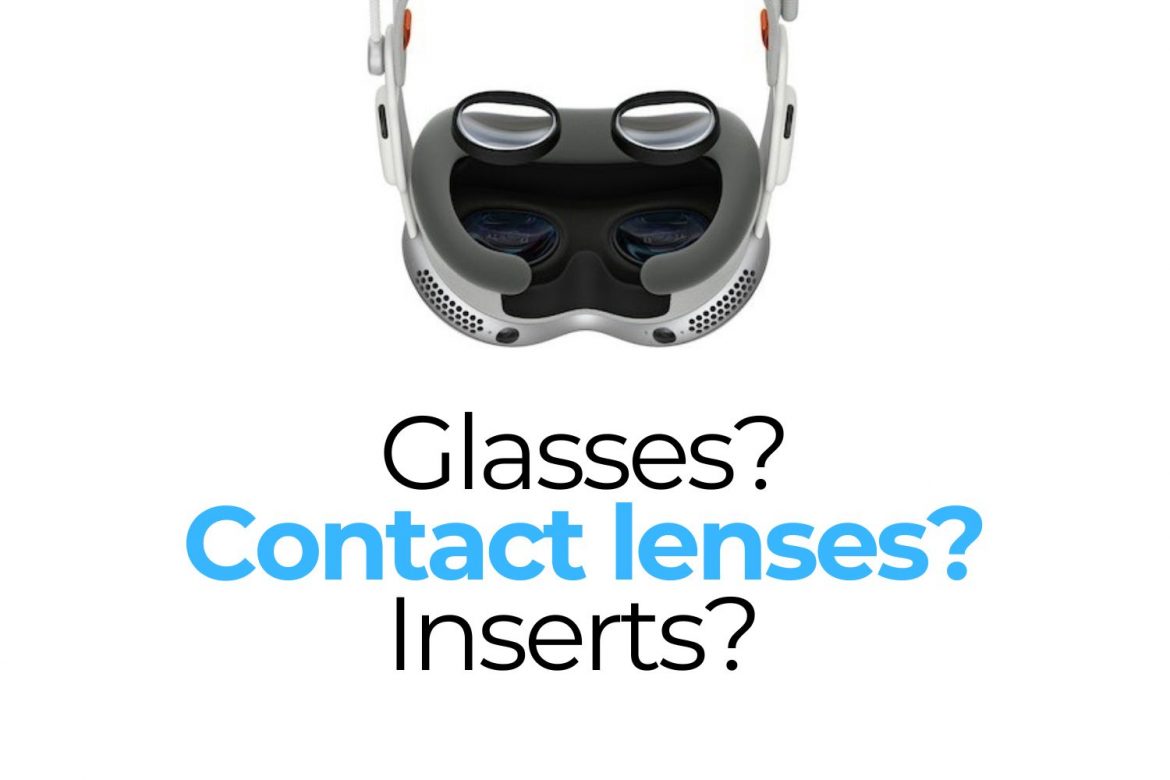274 total views , 1 views today
New product releases from Apple tend to garner a good deal of attention. Apple Vision Pro, released in February 2024, is no exception.
Given that 79 percent of U.S. adults use some form of vision correction, one of the questions surrounding the new “mixed reality” headset is: Can you use it while wearing glasses?
Apple says no.
A support page reads:
If you require vision correction, you must either wear contact lenses or purchase compatible ZEISS Optical Inserts, as eyeglasses are not compatible with the device. A subsequent page provides answers to five additional questions regarding vision prescription and vision condition needs. We’ll focus on your options here.
What if you wear contact lenses?
If you use single-vision soft prescription contacts, you’re good to go. Hard contact lenses might not work, and cosmetic contacts are not compatible, says Apple.
Apple saw it coming…
It’s no surprise that Apple got out ahead of this challenge and developed a solution that works for many: prescription ZEISS optical inserts.
A valid prescription gets the job done. Note that intermediate distance (computer distance) should not be part of the prescription. You’ll need what eye care providers call a “full manifest refraction,” which indicates your distance and/or near correction needs.
ZEISS Optical Inserts are available for most corrections. If you normally use progressive or bifocal lenses, you’ll be fine. The inserts will also accommodate you if you wear reading glasses. However, the inserts are not available to meet the needs of prescriptions containing a prism value (for double vision and misalignment issues).
Apple offers this link—from ZEISS—which you can use to check if your prescription is supported.
Some say you can make it work with glasses
Of course, Apple can’t stop you from strapping on its new headset over your glasses. Kyle Riesenbeck of UploadVR gave it a try and wrote this on the company’s blog:
“It seemed to work. It was a very snug fit with my current style of glasses, but I was able to get the headset on with my glasses firmly pressed against my face and the distance between my own lenses and the Vision Pro’s was millimeters from collision. I watched as the green outlines inside Apple Vision Pro adjusted to my eyes and set up eye tracking. I had a reduced field of view as with every other VR headset I’d worn.”
Proceed with caution.
At $3499, Apple Vision Pro headsets are quite expensive. While Kyle hasn’t damaged his new headset, he warns, “The gamble of scratching the lenses on such an expensive piece of hardware increases tenfold when you cram your own glasses into it.”
Apple makes it clear: its warranty does not apply to damage caused by improper use, as stated in its published guidelines.
The Zeiss corrective inserts start at $100, so if your prescription allows you to order them, it’s the wise way to go.
Some say you can make it work without glasses
Jason Cipriani, who writes device reviews for Pocket-lint, presents a bit of a counterpoint. He claims he can’t use the ZEISS lenses. Although he’s being fitted for contact lenses, he did a demo of Apple Vision Pro without any vision correction and wrote:
“As soon as the Vision Pro finished booting up, I was blown away—not because of the giant cursive Hello that I saw appearing across the Apple Store shelves right in front of me, but because I could very clearly see the text. To be clear, I have poor eyesight and thought any text in the headset would be difficult for me to read without wearing ZEISS lenses or soft contacts.”
He concludes, “The most surprising thing about Apple Vision Pro to me so far is the fact that I can use it without any vision correction.”
Hmph. It’s early. We’ll have to see how this shakes out in the months to come. However, the general consensus is soft contact lenses are the way to go for those with vision correction needs who want to use Apple Vision Pro.


